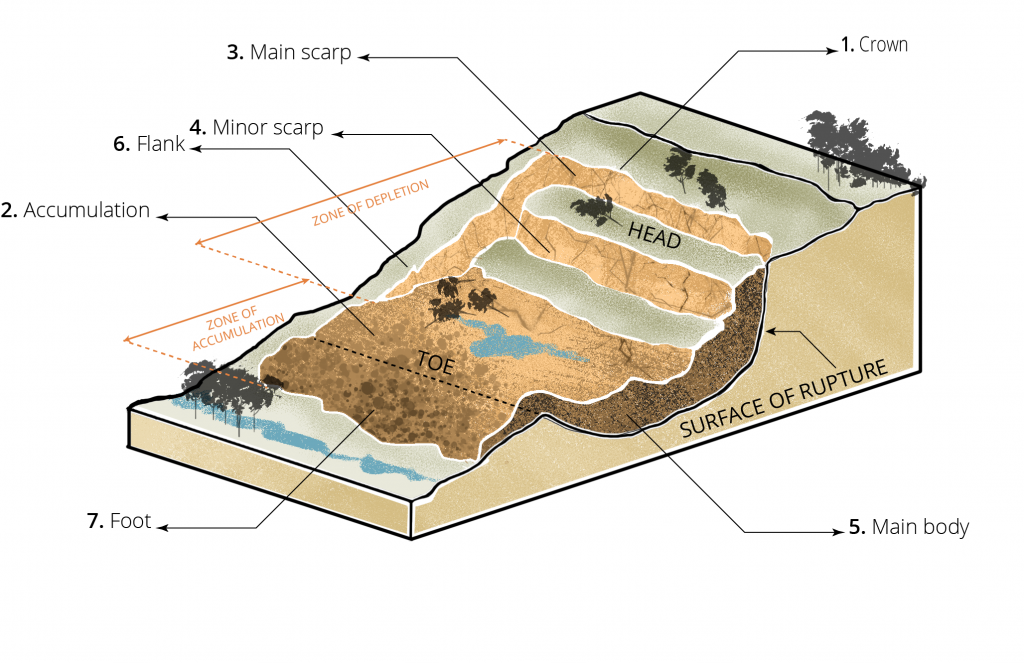“Landslide” is a generic term that is commonly used to designate a myriad of types of mass movements, which can be defined as the bulk downslope movement of a mass of rock, debris, earth, or soil (soil being a mixture of earth and debris) due to gravity. They can be triggered by a number of geological, atmospheric, and human‐made factors. A more detailed classification of mass movements follows further in this blog, but for the sake of simplicity, the term “landslide” will be used through the text as an encompassing definition.
Regardless of the terminology, understanding the basic parts of a typical landslide is helpful for the landscape architect, in order to better differentiate between several mass movements and, ultimately, better tailor their design and refine their communication with the public.
Landslides are characterized by their different shapes and sizes in different terrains. The components of landslides are shown in the figure below:

- Crown: the uppermost part of any soil or rock surface that is not involved in the landslide but is nearest to the part of the landslide. It is characterized by deposition of coarse material.
- Accumulation: the volume of the displaced material that lies above the original ground surface.
- Main scarp: a steep surface on the undisturbed ground at the upper edge of the landslide, below the crown. It is the visible part of the surface of rupture and is caused by movement of the displaced material away from the undisturbed ground.
- Minor scarp: a steep surface on the displaced material of the landslide produced by differential movements within the displaced material.
- Main body: the part of the displaced material of the landslide that overlies the surface of rupture between the main scarp and the toe of the surface of rupture.
- Flank: the non-displaced material adjacent to the sides of the rupture surface is termed the flank. It can be viewed very clearly from the crown. The flank is denoted as left and right flanks.
- Foot: the portion of the landslide that has moved beyond the toe.
